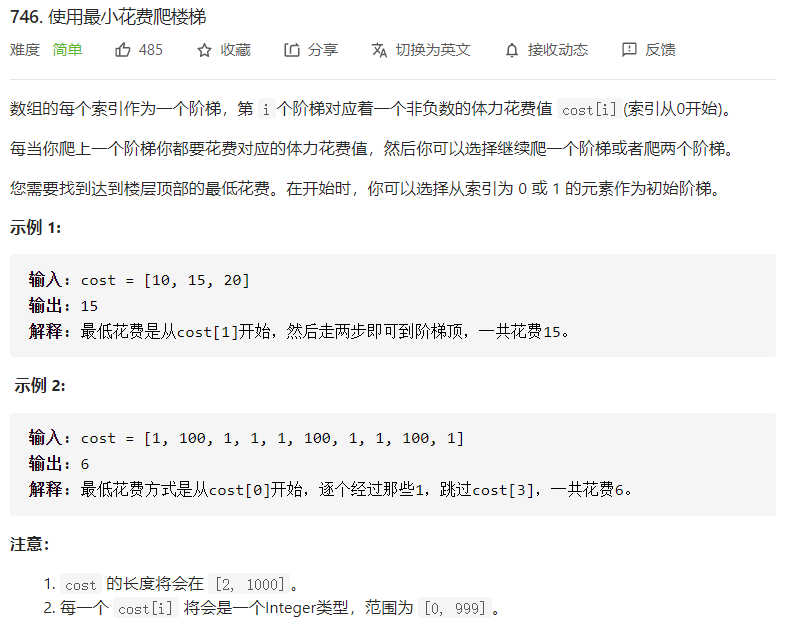
题目分析
爬楼梯问题大家都已经很熟悉了,这个问题比爬楼梯问题稍微复杂一些,不过思路和方法都是类似的,小伙伴们还记得如何求解吗?
记忆化+DFS
经典的爬楼梯问题和斐波那契数列问题是相同的,可以通过记忆化+DFS或者DP来求解。
我们要求从0号或者1号位置出发到达n的最小花费。我们可以从后向前计算,令dfs(k)代表从k出发到达n的最小花费,先算从n - 1出发到达n的最小花费,从n - 2出发的最小花费……
从k出发可以到k + 1索引,也可以到达k + 2索引,因此我们要求从k出发的最小花费,就要求min(dfs(k + 1), dfs(k + 2)) + cost[k]。为了节省冗余计算,我们使用一个哈希表记住从k出发的最小花费,这样递归的时候可以进行剪枝。
最后比较dfs(0)和dfs(1)的最小值即可。
算法的**时间复杂度为$O(n)$,空间复杂度为$O(n)$**。
1 | #include<iostream> |
DP
我认为DP解法是解决这类问题的最优解法,也是需要小伙伴掌握的一种解法。
其实DFS+记忆化本质上就是一种DP思想,只不过用递归的方式进行实现罢了。
DP介绍的是从前向后的计算方法,令dp[k]是到达k的最小花费,先算到达2的最小花费,到达3的最小花费……
从k - 2出发可以到k索引,从k - 1出发也可以到达k索引,因此我们要求到达k的最小花费,就要求min(dp[k - 1], dp[k - 2]) + cost[k]。因为我们每次只用到前两次的数据,因此我们还可以进一步减小空间复杂度。
算法的**时间复杂度为$O(n)$,空间复杂度为$O(1)$**。
1 | #include<iostream> |
刷题总结
爬楼梯问题太经典了,小伙伴们一定要学会DP求解的思路。如果还能提出DFS+记忆化的方案,也能给你在面试中的表现大大加分,可能不需要写DFS+记忆化的过程,只需要实现DP,然后口述记忆化的流程即可。